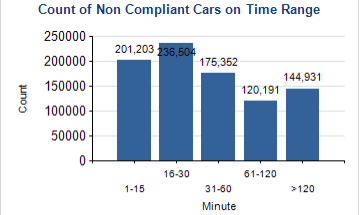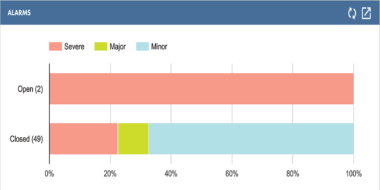

Over the years, the parking industry has welcomed tremendous technological advancements. One of the most important? Vehicle detection sensors.
By working harmoniously alongside our trusted parking enterprise management system PEMS, intelligent parking sensors offer a more efficient way of managing car parks in a way that benefits cities’ infrastructure and improves traffic safety.
How sensors improve the lives of… motorists
Vehicle detection sensors’ main purpose is to highlight available parking spaces quickly. How does it work? The in-ground sensors buried in each determined park space send data to management platforms, capable to analyse the data and forward it via APIs with pay by phone mobile applications.
Prompts from the applications direct the user to the available locations safely. This stops drivers from spending time circling the area in search of a park, which in turn reduces traffic congestion and the stress that goes with it.
Another great advantage is that it allows the motorist to pay for time up-front, or set the ‘meter’ and pay for what they have used at the end – all without having to go back to the parking spot.
Any Pay-by-Phone application can be integrated into our open and scalable parking enterprise management system PEMS.
 Drivers can receive real-time updates to find the nearest available park.
Drivers can receive real-time updates to find the nearest available park.How sensors improve the lives of… enforcement teams
Before the introduction of advanced intelligent parking technology, chalking of tyres was one of the only ways enforcement officers could monitor parking overstay activity. However, not only was this method inaccurate, it was also physically demanding and time-consuming, as officers had no sure clue as to which cars were non-compliant and which were.
Thankfully, the vehicle detection sensors (in accordance with an innovative management system such as PEMS) allows officers to follow real-time and accurate data updates. Once a car enters a sensor-fitted parking space, occupancy data is transmitted to the PEMS system where it is processed and made readily accessible to officers via their handheld devices.
Now, those in the field no longer have to check every vehicle on site to decipher whether infringements are needed. Instead, officers can make their way directly to non-compliant cars that are shown on the AutoISSUE application. This direct enforcement methodology significantly improves officers’ efficiency through the elimination of unproductive patrolling. Furthermore, they’re able to capture approximately 20-30 per cent more offences than is possible in standard old deployment.

Vehicle detection sensors can reveal trends that can better shape your smart city structure.
Duncan vehicle detection sensors can display all current overstay events on multiple handsets so that officers’ patrolling “two-up” can divide the work of processing a series of nearby overstay events evenly between them. In contrast, other in-ground sensor system overstay events can only be displayed on a single handset. This can leave one officer in a two-up patrol having all in-range overstay events being displayed on his or her handset while the other officer has none. As a result, officers using Duncan sensors can process overstay events much more efficiently than officers using other in-ground sensor systems.
How sensors improve the lives of…councils and management
As well as supporting ‘smart city’ strategies, the sensor and PEMS’ dynamic wayfinding guidance technology also bolsters legal evidence during court hearings. With a low latency, (99 per cent of events communicated to PEMS within 30 seconds), a 99 per cent vehicle detection accuracy (the highest on the market) and comprehensive records easy to export, Australian councils using the sensors to write infringements, have experienced a less than 0.006% error rate, and significantly, no cases of unsuccessful court prosecutions.
Australian councils using the sensors to write infringements have experienced a less than 0.006% error rate and no cases of unsuccessful court prosecutions.
Management teams can also feel reassured that officers in the field will feel more comfortable whilst on the job. Before, staff didn’t have accurate evidence to refer to when issuing infringement notices and were susceptible to abuse and assault from non-compliant drivers. Now, that worry is diminished, as officers have the clearest idea of whether to write a ticket or not, and have real-time information to help them decide – improving fairness for all involved.
Where motorists are concerned, councils will see a significant improvement in traffic congestion – especially in busier urban areas. With less circling looking for free parking spots, streets are safer for pedestrians. Motorists can now spend more time visiting local businesses, which increases turnover and contributes to the overall infrastructure of the area.
So far, Duncan Solutions has thousands of installed sensors around Australia. After assessing how our sensors were working for one of our trusted clients, we discovered that 50 per cent of the violations lasted more than 30 minutes. This demonstrates the need for sensors and PEMS. Thanks to notifications pointing officers to non-compliant cars, fairness can be applied to all.
Want to find out more? Get in touch with the team today and request a demo.
















